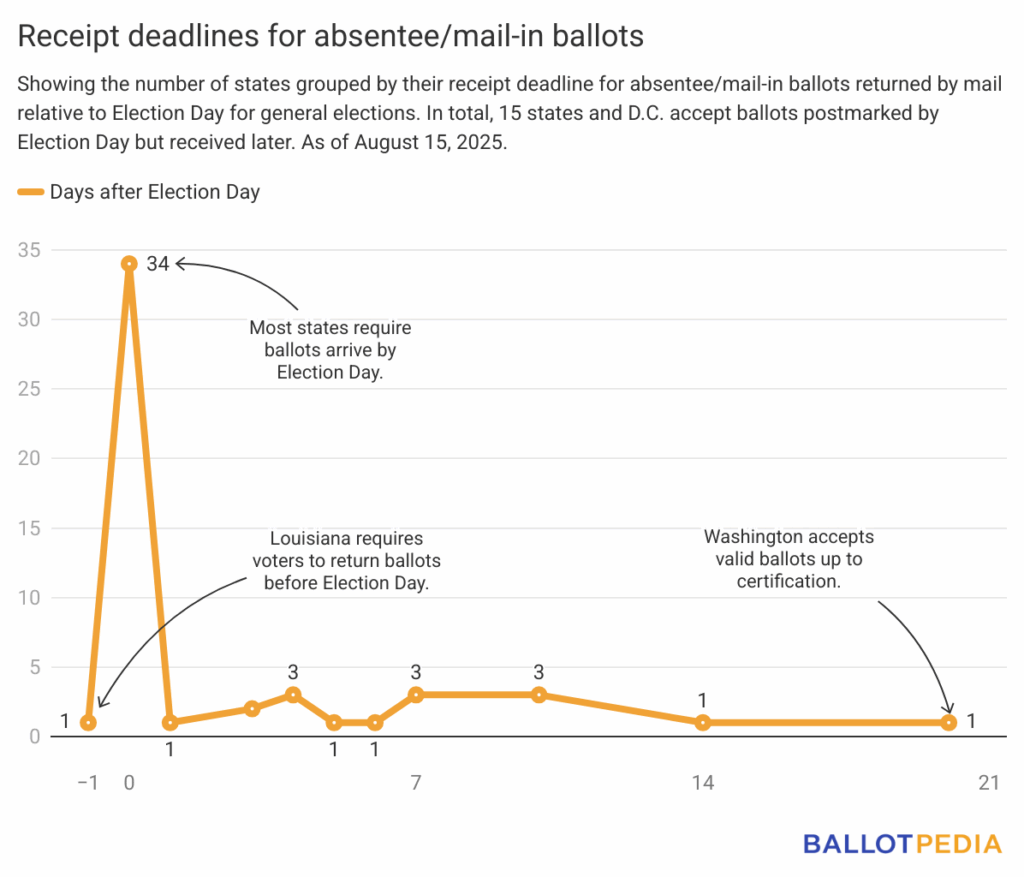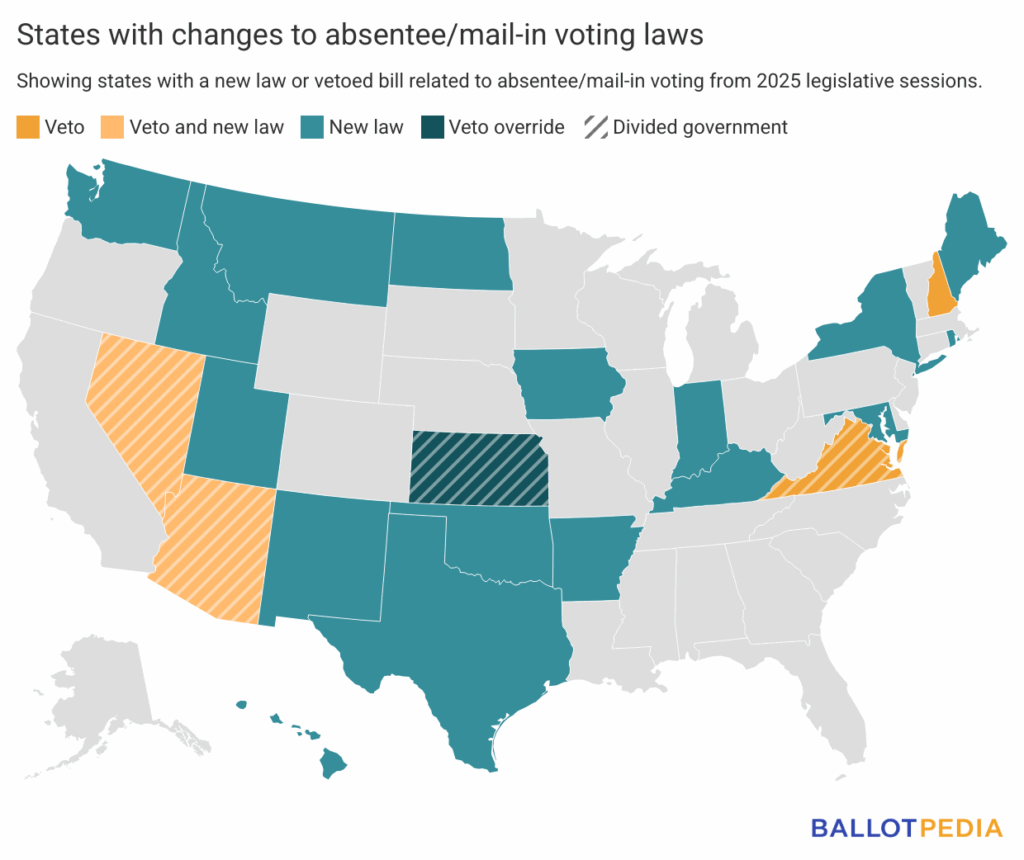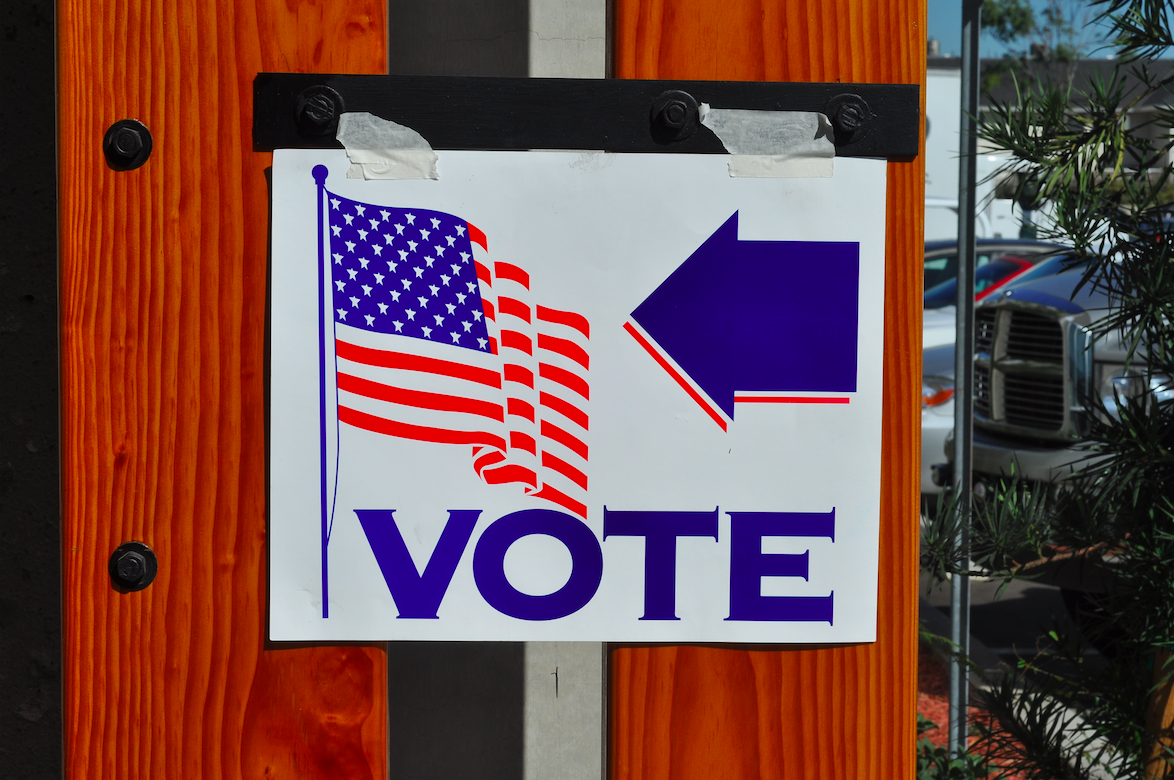On Aug. 18, President Donald Trump (R) said in a social media post, "I am going to lead a movement to get rid of MAIL-IN BALLOTS, and also, while we’re at it, Highly 'Inaccurate,' Very Expensive, and Seriously Controversial VOTING MACHINES.” Trump said he would issue an executive order ending mail-in voting before the 2026 midterm elections. Later that day, Trump said that lawyers were working on the executive order.
The U.S. Election Assistance Commission reported that 30.3% of all voters cast mail ballots in the 2024 federal general election.
Currently, all 50 states allow some form of absentee/mail-in voting. Fourteen states require voters to provide an excuse to vote by mail.
Most states require voters to request an absentee/mail-in ballot. However, eight states — California, Colorado, Hawaii, Nevada, Oregon, Utah, Vermont, and Washington — automatically mail each registered voter a ballot, though Vermont only uses this system for general elections. Utah Gov. Spencer Cox (R) signed legislation earlier this year that will end the state’s all-mail voting system in 2029.
States also have different requirements for what documentation a voter must provide in order to vote by mail.
Three states — Alabama, Kentucky, and New Hampshire — require voters to include a copy of their photo identification when requesting a mail ballot. (New Hampshire Gov. Kelly Ayotte signed this requirement into law earlier this month. Voters can also present their ID in person at their town clerk’s office or submit a notarized letter with their mail ballot application.) Other states with voter ID requirements require voters to provide their driver’s license number when applying to vote by mail.
Arkansas and North Carolina require voters to include a copy of their photo ID when they submit an absentee/mail-in ballot. Voters in North Carolina may include an exception form if they are unable to provide a copy of their photo ID.
Under federal law, in most states, voters who have not cast a ballot in that location and who did not submit a copy of their ID when registering to vote must provide a copy with their ballot.
In some states, election officials are required to verify certain details on an absentee ballot application with information the voter provided when they registered to vote. (In May, Montana Gov. Greg Gianforte signed legislation requiring clerks to verify the signature and date of birth on the absentee ballot signature envelope against the voter's registration or absentee ballot request form.)
States also have different deadlines for when voters can request absentee/mail-in ballots, and different requirements for when ballots must be returned in order to be counted.

In 2025, three states — Kansas, North Dakota, and Utah — enacted laws prohibiting election officials from counting absentee/mail-in ballots that arrive at a local clerk’s office after Election Day. Previously, ballots postmarked by Election Day would be counted if they arrived before certain deadlines: In Kansas, ballots would be counted if they arrived by 5 p.m. on the Friday following Election Day. In North Dakota, ballots could be counted if they were delivered within 13 days of the election. In Utah, ballots would be counted if they were received by noon on the day of the canvass.
With the three new laws, there are 15 states remaining where state law permits election officials to count ballots that are postmarked by Election Day but arrive later. In two of these states—Mississippi and Texas— a U.S. Court of Appeals for the Fifth Circuit ruling currently blocks election officials from counting late arriving ballots. Read more about that ongoing case here.
On March 25, 2025, Trump issued an executive order that, among other things, prohibited states from counting ballots received after Election Day. On June 13, Judge Denise J. Casper of the U.S. District Court for the District of Massachusetts temporarily blocked certain sections of the order, including the Election Day ballot receipt requirement. The U.S. Department of Justice appealed to the U.S. Court of Appeals for the First Circuit on July 31.
In the first eight months of 2025, legislators have introduced 386 bills related to absentee/mail-in voting. Thirty-seven bills in 20 states have become law, more than all of 2024 (18 states, 31 bills and resolutions) but less than in 2023 as of the same date (25, 48). Lawmakers have made changes to various aspects of the absentee/mail-in voting process, with particular emphasis on the details of requesting, returning, and processing ballots. Enacted bills include:
- Maryland SB 93, which requires local election officials to send voters information about requesting an absentee ballot along with a sample ballot and other election mailings. This does not apply to voters on the permanent mail-in ballot list. Gov. Wes Moore (D) signed the law on May 6.
- Oklahoma SB 814, which allows active duty military members or first responders to make an emergency request for an absentee ballot after the normal deadline for doing so has passed. Gov. Kevin Stitt (R) signed the law on May 5.
- Rhode Island S 0520, which extends eligibility for the state’s permanent absentee voter list to any voter, instead of only those with disabilities or confined to a nursing home and replaces the affidavit to apply for the list with an application form. Gov. Daniel McKee (D) signed the law on June 24.
- Washington SB 5669, which requires absentee ballots to be sealed in a security envelope, placed within an additional outer envelope. It also mandated voters deliver the ballot to the district's principal office by the close of polls on election day, or postmarked by election day and received within seven days. Gov. Bob Ferguson (D) signed the law on April 30.



